
The muscles that sit around the side of the hip are called the hip abductor muscles. Their main functions are to move your leg out away from the midline of your body (abduction) and to anchor your pelvis to your femur when standing on one leg. This allows you to keep your pelvis fairly level and maintain your balance. The trochanteric bursa is involved with these layers.
Recovering from Gluteal Tendinopathy, Trochanteric Bursitis or GTPS
FIRST LESSON IS FREE!
Gluteus minimus (smallest muscle), which joins into the hip joint capsule and is thought to have an important role in supporting this joint. It runs from the outer side of the pelvis to its anchor-point on the femur (greater trochanter) (see below).
Gluteus medius (middle sized muscle), which also joins the pelvis to the top of the femur (greater trochanter) and is one of the main muscles that helps control pelvic position (see below).
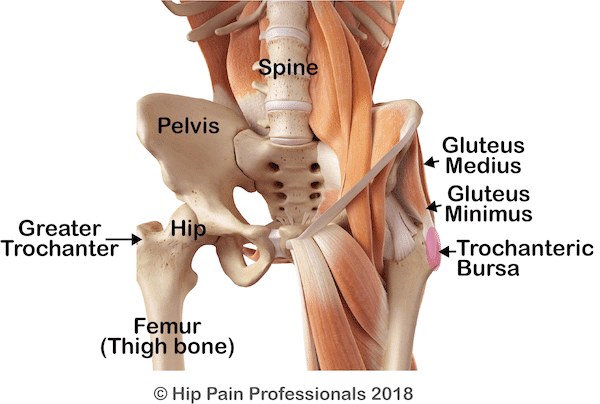
The upper part of the gluteus maximus (largest gluteal muscle) and the tensor fascia lata (TFL) muscle. These muscles create their effect at the lateral hip through their connections to a long fibrous band that runs down the outside of the hip, thigh and knee, called the iliotibial band (ITB) (see below).
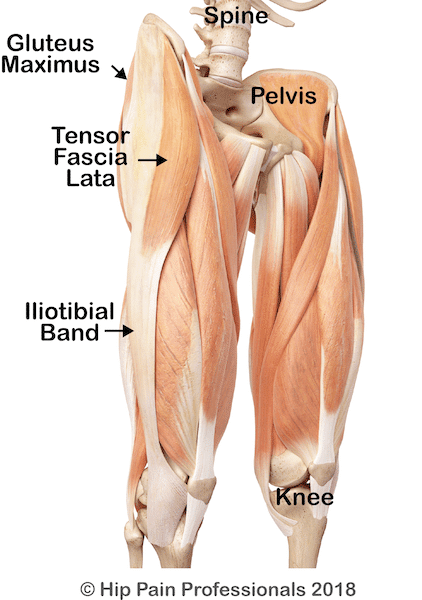
Recovering from Gluteal Tendinopathy, Trochanteric Bursitis or GTPS
FIRST LESSON IS FREE!
With all these muscles (gluteus minimus, gluteus medius, gluteus Maximus and TFL) and their tendons moving over each other and the underlying bones, a number of small flat, fluid-filled cushions (bursae) are present, to help everything slide freely. The main bursae are the trochanteric bursa, the subgluteus medius bursa and the subgluteus minimus bursa. Inflammation of these bursa is often referred to as trochanteric bursitis
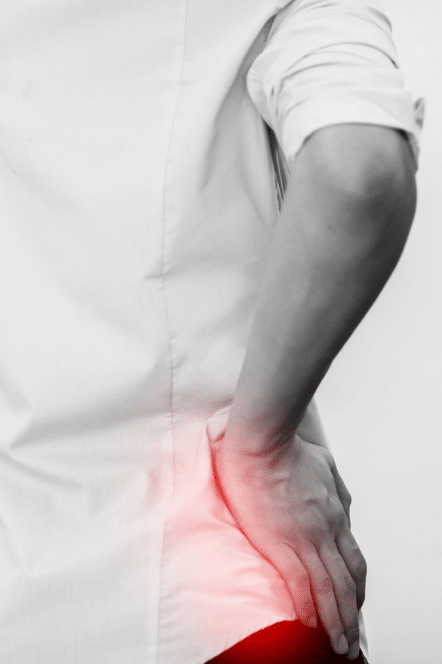
Acute muscle tears or strains occur in the hip abductor muscles most frequently in the gluteus maximus and gluteus medius muscles and occasionally in the tensor fascia lata muscle. This is more likely to occur during rapid sidestepping or change of direction when running. Tears in these muscles are however relatively rare compared to thigh and groin strains.
Pain over the side of the hip that develops more gradually is most commonly related to the health of the soft tissues at the anchor-point for the gluteus medius and minimus on the femur (the greater trochanter). You may receive a diagnosis of:
Watch out for our upcoming blog on terms used for lateral hip pain, including gluteal tendinopathy, trochanteric bursitis, and greater trochanteric pain syndrome.
Pain in this area is often attributed to tightness of the ITB and therefore you may read much advice to stretch the ITB as a self-help strategy.
There is however NO evidence to support stretching the ITB as a self-help strategy. In fact, expert Hip Pain Professionals agree that people with gluteal tendon or bursal problems are much more likely to be longer than average, rather than short in the ITB. Stretching may actually provoke the pain, rather than settle it.
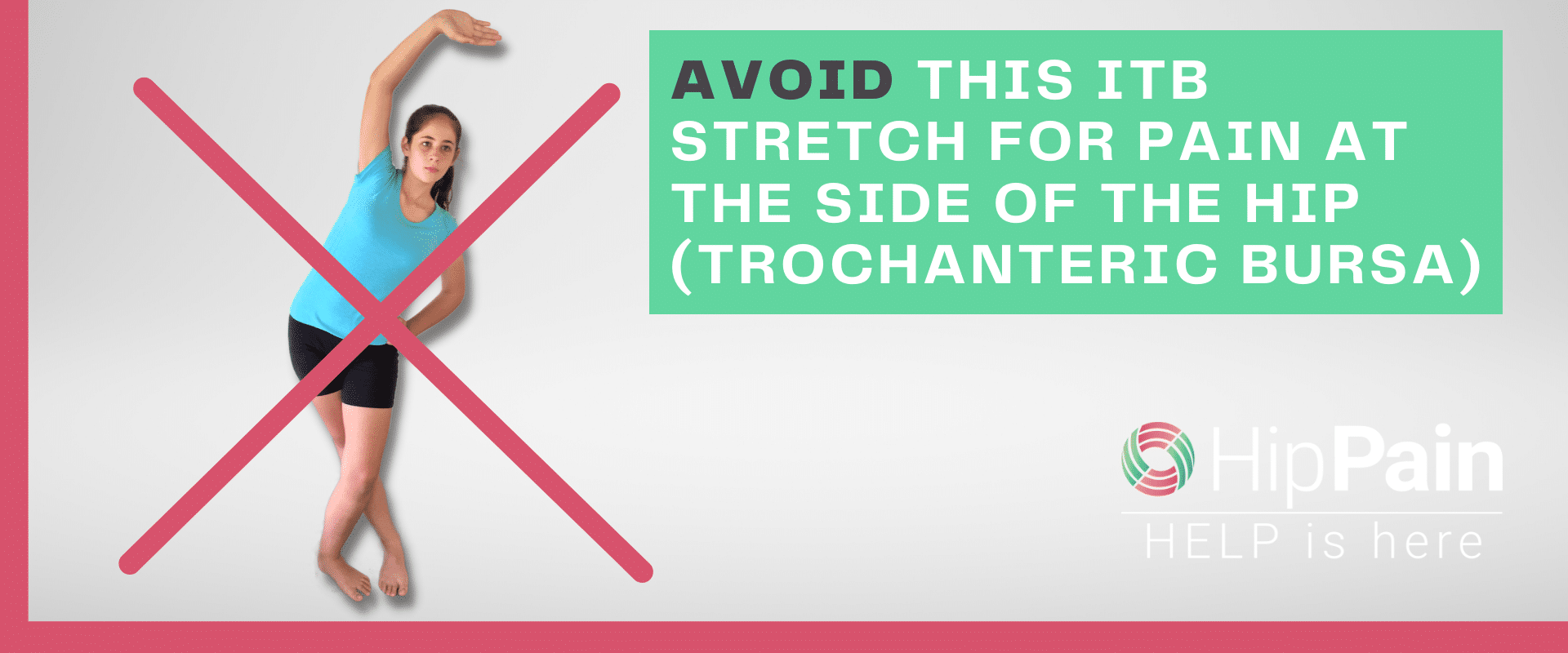
There will be more information in an upcoming blog on the high-quality scientific evidence that is now available on successful management of this condition (with NO ITB stretching!).
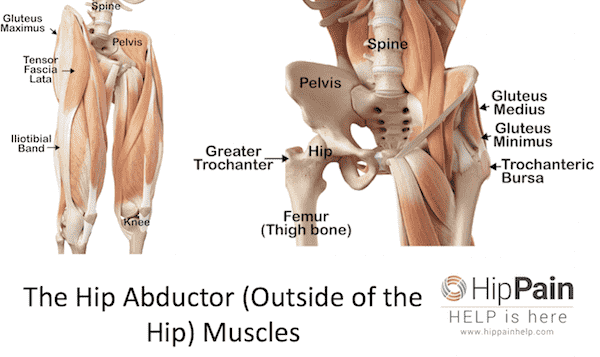
Recovering from Gluteal Tendinopathy, Trochanteric Bursitis or GTPS
FIRST LESSON IS FREE!
This blog was written by Dr Alison Grimaldi, an expert physiotherapist, educator and researcher with over 30 years working in the field, a special interest in the hip and 20+ years contributing to hip research.

Dr. Alison Grimaldi BPhty, MPhty(Sports), PhD is Practice Principal of PhysioTec Physiotherapy Clinic in Brisbane, an Australian Sports Physiotherapist, an Adjunct Senior Research Fellow at the University of Queensland, and a Fellow of the Australian College of Physiotherapists.
Visit our Pain Locator Map to learn more about other causes of lateral hip pain.

Check out our next blog series
Over a series of 3 blogs we will look at Hip dysplasia, what it is, what are the different types of dysplasia, the symptoms, causes, and possible treatments.
